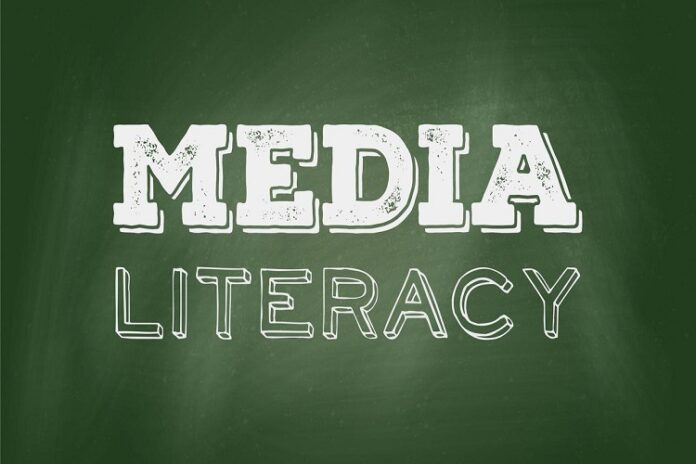In today’s digital age, media literacy has become an essential skill. With the vast amount of online information, it is crucial to equip individuals to analyze and evaluate media messages critically.
Teaching critical media literacy enables individuals to navigate the digital landscape, understand media biases, recognize misinformation, and make informed decisions. This article explores the significance of teaching critical media literacy and provides practical strategies to cultivate this skill in students.
Why is Critical Media Literacy Important?
Critical media literacy empowers individuals to understand and interpret the messages they encounter in the media. Discover comprehensive information on Teaching Critical Media Literacy at RakuRakuSchool.com. It allows them to question the motives behind media production, identify biases, and think critically about the information presented to them. In an era where misinformation spreads rapidly, critical media literacy safeguards against manipulation and enables individuals to make informed decisions.
Role of Education in Fostering Critical Media Literacy
Education plays a vital role in cultivating critical media literacy skills. By integrating media literacy into the curriculum, educators can provide students with the tools to navigate the digital landscape responsibly. Teaching critical media literacy enhances students’ ability to analyze media messages and promotes active and engaged citizenship. Unlock the secrets of media literacy from EduCity1713.com and help your students become discerning digital citizens.
Understanding Media Bias
Media bias is an inherent characteristic of media production. Teaching students to recognize and analyze media bias is crucial in developing critical media literacy. By understanding the various types of bias, such as political, ideological, and commercial biases, students can approach media content with a discerning eye and avoid being swayed by hidden agendas.
Analyzing and Evaluating Media Messages
Teaching students how to analyze and evaluate media messages is essential to critical media literacy. By examining the techniques used in media production, such as framing, selection of sources, and use of persuasive language, students can assess the credibility and reliability of the information presented. This skill enables them to differentiate between factual reporting and opinion-based content.
Developing Digital Citizenship Skills
In the digital age, being a responsible digital citizen is paramount. Teaching critical media literacy involves educating students about their rights and responsibilities as digital citizens. This includes understanding online privacy, practicing ethical behavior, engaging in respectful online communication, and being aware of the consequences of their online actions.
Strategies for Teaching Critical Media Literacy
Incorporating Media Literacy Across the Curriculum
Integrating media literacy across various subjects enables students to engage with media critically in different contexts. English classes can explore media representation and the power of storytelling, while social studies classes can examine media’s influence on public opinion and political processes. Students gain a holistic understanding of media’s role in society by incorporating media literacy into multiple disciplines.
Teaching Fact-Checking Techniques
Fact-checking is an essential skill in the digital age. Educators should teach students to verify information from reliable sources, cross-reference facts, and discern credible sources from dubious ones. This equips students with the tools to navigate the sea of information online and make well-informed judgments. Empower yourself and your students with the essential skills for navigating the digital age. Know more about skills learning at ILearnUK.com.
Engaging Students in Media Production
Engaging students in media production fosters a deeper understanding of media messages and their impact. By creating their own media content, such as videos, podcasts, or blogs, students develop critical thinking skills, learn to communicate effectively and gain insights into the challenges faced by media producers. This hands-on approach enhances their ability to deconstruct media messages.
Promoting Critical Thinking Skills
Teaching critical media literacy involves nurturing students’ critical thinking skills. Educators should encourage students to ask questions, challenge assumptions, and examine different perspectives. By promoting critical thinking, students become active participants in media consumption rather than passive recipients.
Encouraging Discussion and Debate
Creating a classroom environment that encourages open discussion and respectful debate is instrumental in teaching critical media literacy. Students should feel comfortable expressing their opinions, sharing diverse perspectives, and engaging in constructive dialogue. This cultivates the skills to analyze media messages and develop well-rounded viewpoints critically.
Overcoming Challenges in Teaching Critical Media Literacy
Teaching critical media literacy comes with its own set of challenges. Some common hurdles include limited resources, resistance to change, and the fast-paced nature of digital media. Educators must adapt their teaching methods, leverage available resources, collaborate with other educators, and stay updated with emerging media trends to teach critical media literacy effectively.
Conclusion
Teaching critical media literacy is indispensable in the digital age. It equips individuals with the skills to navigate the complex world of media, recognize manipulation, and make informed decisions. By integrating media literacy across the curriculum and employing effective teaching strategies, educators can empower students to become critical thinkers and responsible digital citizens.









